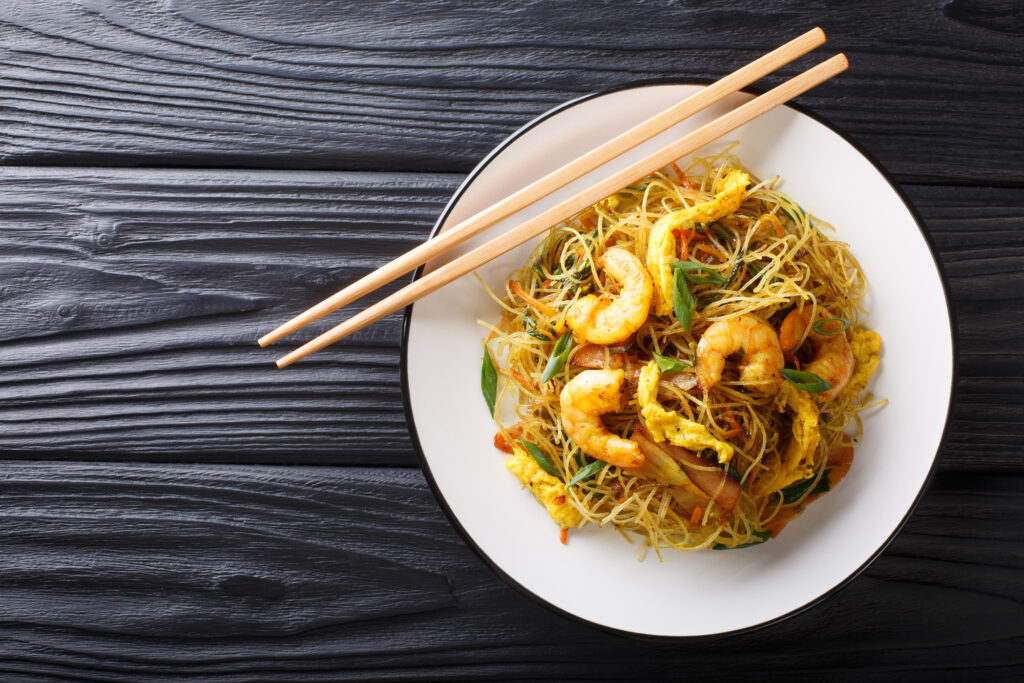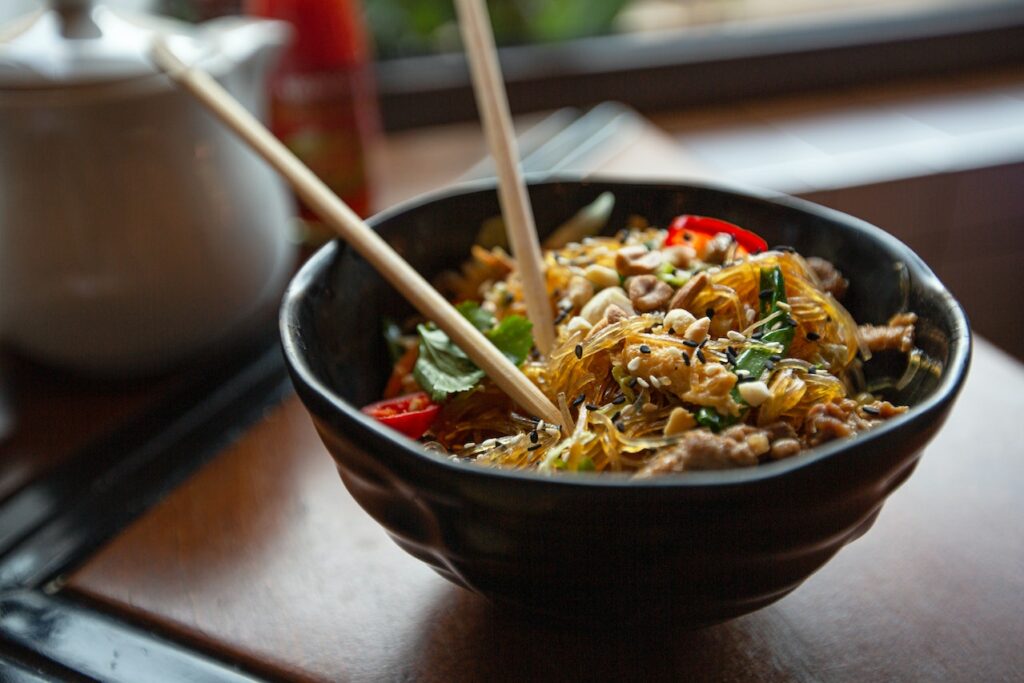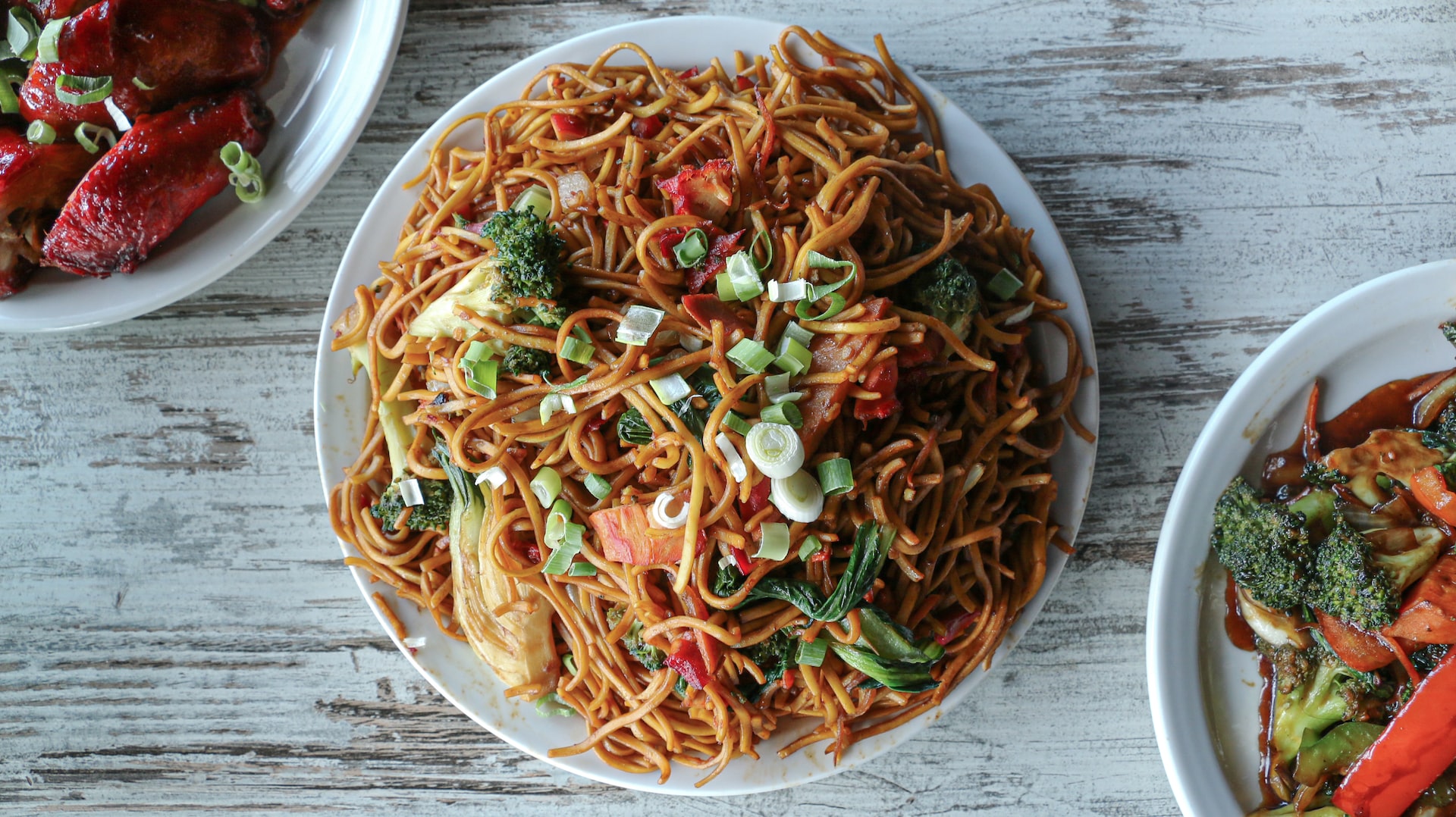Mei fun and Chow mein are both popular Chinese dishes that bear similarities. But you’ll notice key differences when undertaking a mei fun vs. chow mein comparison.
What Is Mei Fun?

Mei fun, also called rice vermicelli, is a thin rice noodle popular in many Asian cuisines. Originating from China, this light and airy noodle is a complete delight. Mei fun bears remarkable similarities with angel hair pasta regarding shape and size with its thin strands.
It is traditionally made with only ground rice and water, making it a gluten-free dish. However, ingredients like egg and wheat have been included in the traditional mei fun dish recipe.
It is typically served with a sauce but can also be a part of a soup. Mei fun can be eaten and enjoyed by everyone, whether vegetarians or meat eaters. Both fresh and dried varieties of mei fun can be found in the market.
What Is Chow Mein?
Chow mein is a dish of stir-fried noodles which is served with vegetables. But the noodle used to make this dish is also called chow mein. The name “chow mein” literally translates to “stir-fried noodles” and is a native Chinese dish.

Although the main ingredients include noodles and vegetables, this dish has other variations. The noodles themselves are usually wheat noodles which include eggs.
Mei Fun Vs. Chow Mein
- Origin: Both Mei fun and Chow mein have their origins in China.
- Ingredient: Mei fun noodles are made from rice, while the chow mein noodle is made from wheat and egg.
- Method of cooking: Mei fun is often bought dried, so it has to be soaked in water to be revitalized before use. Mei fun is precooked before being dried, so it doesn’t need much cooking. On the other hand, dried chow mein noodles must be boiled for a few minutes.
- Texture: Mei fun is dainty and fragile due to being gluten-free. While chow mein is chewy with a stiffer texture because of its ingredients. Chow mein has a crispier texture when it is fried.
- Appearance: Mei fun looks semi-transparent with a hint of white when dry. After cooking, the noodle becomes pure white. Chow mein noodles are yellowish before and after cooking.
- Taste: Mei fun has a very mild taste, just like its main ingredient, rice. Chow mein tastes close to pasta as they have similar ingredients. Egg noodle chow mein has a yolk-like flavor to it.
- Dietary Restrictions: Mei fun is made from rice which makes it gluten-free. While chow mein contains wheat and egg, it isn’t suitable for vegans or those with gluten allergies.
- Culinary Uses: Mei fun is versatile and can be used in different dishes like stir-fries, soups, spring rolls, etc. Chow mein noodles are primarily used in stir-fried dishes.

Conclusion
Understanding the differences between mei fun vs. chow mein helps determine where best to use each. While their differences are subtle, they are at their best when used correctly.
